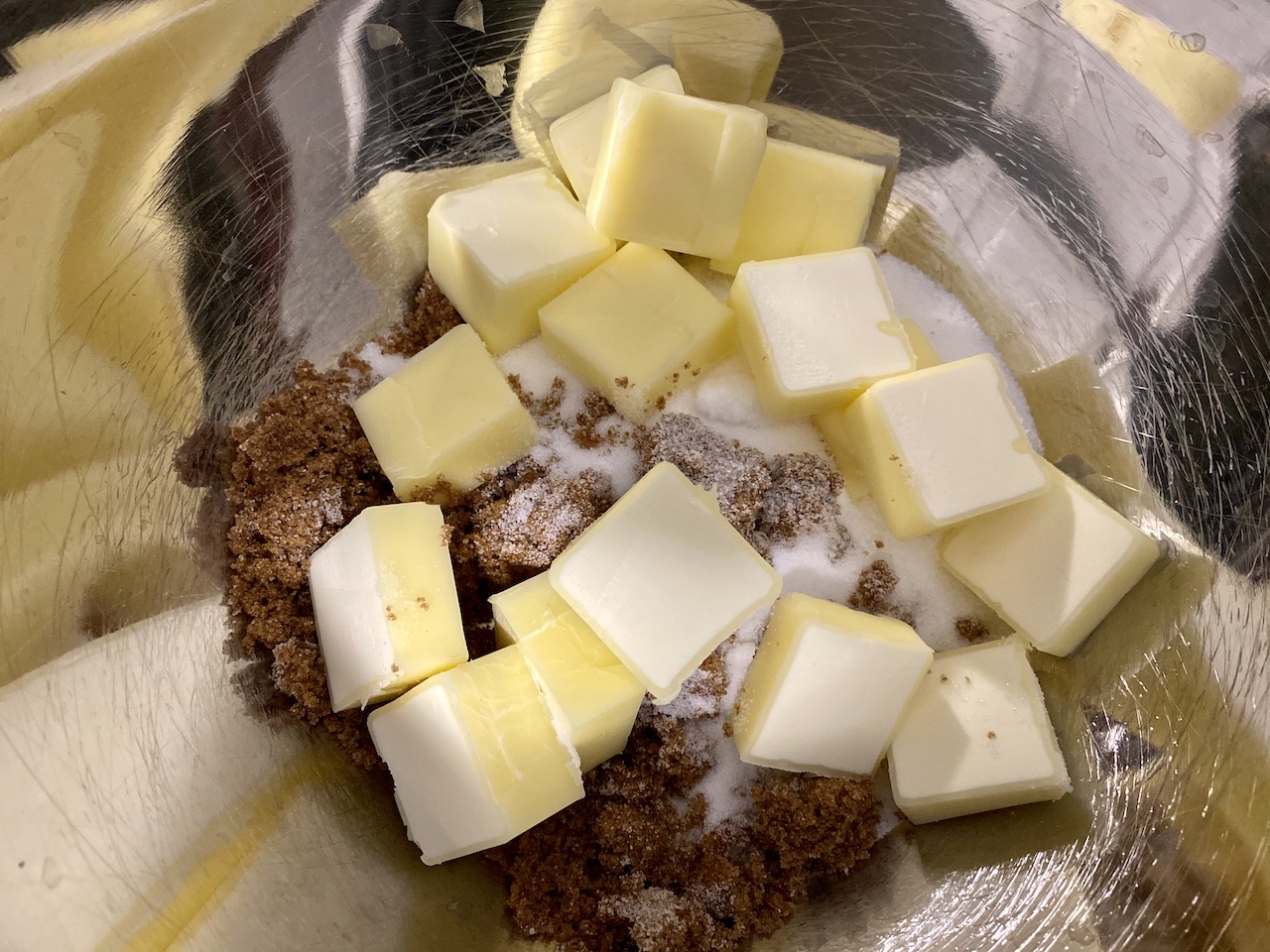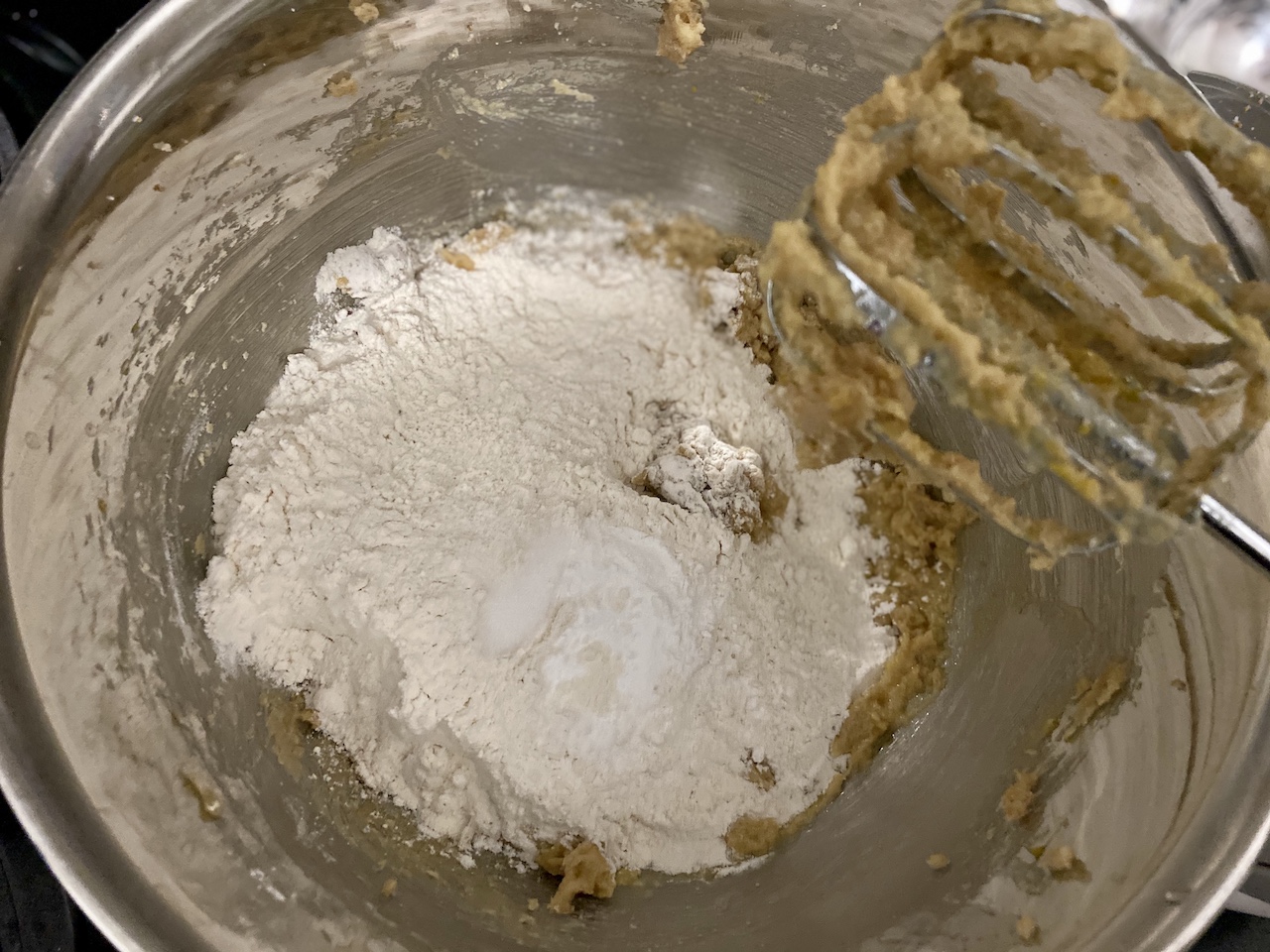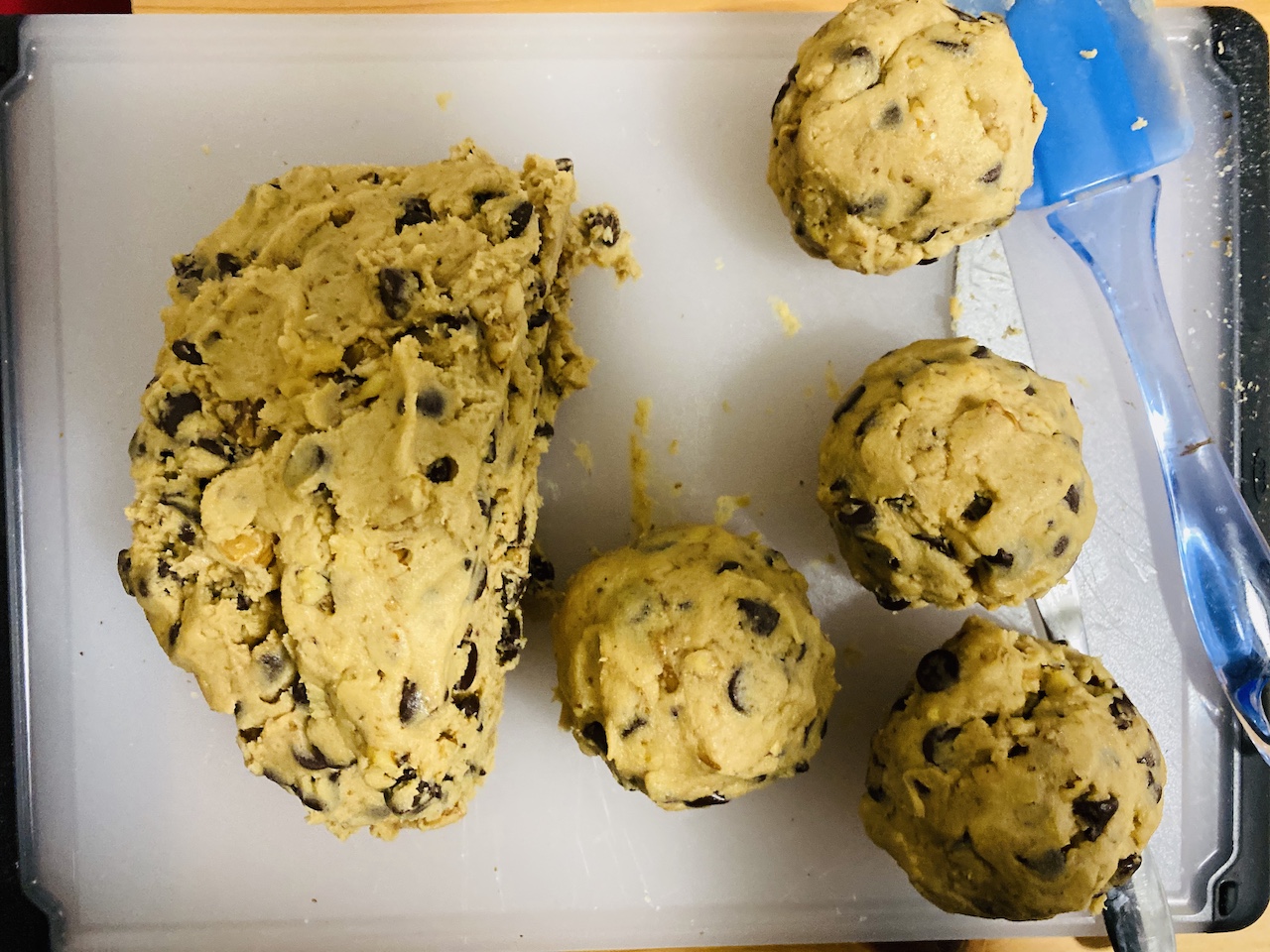
Levain Chocolate-Chip Walnut Cookies
Today’s topic is cocoa. Full disclosure: I spend a lot of my real working life working on issues related to child labor in the cocoa industry, which made it was really hard to keep this post short. (Sorry!) For weeks I’ve been searching for the right recipe for chocolate – something a little different, but not too difficult. Luckily, last week a friend raved to me about Levain cookies. Levain cookies come from New York City’s Levain Bakery, which apparently is very well-known. As a true Midwesterner, I had never heard of the bakery or the cookies, but was fascinated by the idea of a chocolate chip cookie the size of a small cake. I have no idea if these cookies actually taste like the ones at Levain Bakery, but I do know that they are incredible – and really intense. After giving away one, I pretty quickly received a text message: “Oh my God, that cookie is amazing.” They truly are. These cookies should be just cooked, golden brown on top and still gooey in the middle.
But enough about the cookie. Let’s focus on the cocoa industry, which like many commodities, has a largely hidden supply chain and a number of human rights issues. Cocoa beans are found in cocoa pods, which grow on trees. These cocoa trees can only grow in certain latitudes – between 20 degrees north and 20 degrees south of the equator. Much of the world’s cocoa – at least 60 percent – is produced in Cote d’Ivoire and Ghana. This includes most “bulk” cocoa that goes into candy, chocolate chips, Nutella, and most of what you probably buy. Unfortunately, the West African cocoa industry has numerous problems, including low wages for farmers, high incidences of child labor and forced child labor, and it is a leading cause of deforestation in Cote d’Ivoire.
Child labor and forced child labor are not new phenomena. Back in 2001, chocolate companies like Nestle, Cargill, and Hershey’s signed the “Harkin-Engel Protocol,” a voluntary initiative in which they pledged to eradicate child labor in their supply chains by 2005. That didn’t happen. Nor did they eradicate it by 2010 or by 2020, the extended deadlines they kept giving themselves. (This is the problem with voluntary initiatives. They’re voluntary and more about companies convincing consumers that they are making strides than actually making real changes.)
What does “child labor” mean in practice? It varies. In some cases, children attend school and help out on their parent’s farms for a few hours during non-school hours. That’s fine and, in fact, how children learn farming skills. But in other cases children don’t attend school and do hazardous child labor, which includes using a machete, carrying loads that are much too heavy for them, and other dangerous tasks. In yet other situations, children are trafficked, often from Mali and Burkina Faso into Cote d’Ivoire, and forced to work on farms. While it’s unknown how many trafficked children there are – it’s a sensitive subject and it can be hard to tell if an adult with a child is really a relative, as is often claimed – there are at least 16,000 documented cases of trafficked children working on cocoa farms in Cote d’Ivoire, and there are probably many more.
The root of this problem is that farmers aren’t paid enough for their cocoa. They simply don’t earn enough in any given season to pay adult workers, forcing them to depend on child labor. This year, Ghana and Cote d’Ivoire have raised cocoa prices 21 percent, but that’s still not enough to cover costs, especially with many farmers not earning as much during the pandemic. (For a while this year some of the ports were closed, as well as the borders, disrupting supply chains.)
I hear voices already asking: What about Fairtrade chocolate? Sorry to burst the Fairtrade bubble, but Fairtrade and other certification schemes (such as Rainforest Alliance/UTZ) often make little to no difference in the cocoa industry (as well as in other industries, including tea). While you may be paying a couple of dollars or euros more for a Fairtrade chocolate bar, the farmer who grows, harvests, dries, and ferments your cocoa often doesn’t see any of that extra money. In fact, the farmer might not even know that his farm is Fairtrade certified, since the certifiers never bothered to go out and check on the farm, as required. Essentially, farmers are not getting paid the money they deserve, consumers are being swindled, and chocolate companies are making big profits.
Here’s the good news. There is reliable information about the cocoa industry out there, so you can learn all about it! For an engaging watch, check out the Rotten episode on cocoa on Netflix. You can also read more in the Washington Post (see here, here, here, and here). And if you want really in-depth information, take a look at this report on certification schemeslike Fairtrade in the Ivorian cocoa industry or read a petition asking the US government to stop the importation of all Ivorian cocoa into the US produced with forced child labor. (Both the report and the petition were written by Corporate Accountability Lab, the organization I work for). You can also learn more about an upcoming case at the Supreme Court called Doe v. Nestle, brought against Nestle and Cargill on behalf of former forced child laborers.
If you want to buy chocolate that is not tainted by forced child labor, look for companies that call themselves “direct trade” or “bean to bar” and tell you which farm in what country they buy cocoa from. The more you can learn about a company’s supply chain, the cleaner it usually is. (Cocoa produced in Central and South America also tends not to be tainted by child labor.) If you want to make these cookies, consider looking for chocolate chips produced by Guittard. I’ve heard that they may have decent sourcing practices, but I haven’t been able to confirm that. And avoid buying chocolate from the big companies: Nestle, Hershey’s, Olam, Cargill, Ferrero Rocher (sorry to everyone who loves Nutella), Barry Callebaut, and other big brands. They simply aren’t incentivized to stop using forced child labor and so don’t. And don’t believe the nice labels they put on their chocolate. They generally don’t mean all that much.
Levain Chocolate-Chip Walnut Cookies
Course: Dessert, Recipe8
servings40
minutesAdapted from Levain Bakery Chocolate Chip Cookie Recipe on the blog A Bountiful Kitchen
Ingredients
1 cup unsalted butter, cold and cut into tablespoon pieces
3/4 cup brown sugar
1/2 cup sugar
2 eggs
2 1/2 cups all-purpose flour (or 1 cup cake flour plus 1 ½ cups all-purpose flour)
1 teaspoon baking powder
1 teaspoon baking soda
1/2 teaspoon sea salt
2 cups walnuts, roughly chopped
2 cups semi-sweet chocolate chips
Directions
- Preheat the oven to 400˚ F (200˚ C).
- Cream the cold butter, brown sugar, and white sugar together in a large mixing bowl. Using either a hand-held mixer or a stand mixer, cream for about 5-6 minutes until smooth.

- Add the eggs, one at a time, mixing until each egg is combined with the creamed butter and sugar.
- Add the flour, baking powder, baking soda, and sea salt and mix until thoroughly combined, about 30 seconds.

- Add the walnuts and mix again, about 10 second. Then add the chocolate chips and mix for another 10 seconds.
- Once all the ingredients have been incorporated, turn the dough out onto a working surface (I used a cutting board) and knead it a couple of times. Then separate into eight equal pieces and roll each piece into a ball. The cookies are large – don’t be deterred, they will cook!

- Place four cookies on a baking sheet. Bake for 11-12 minutes, until the tops are golden brown but the middle is still gooey and not quite set.
- Wait 15 minutes before eating. Enjoy! And consider sharing, since these cookies are so large!






One Comment
Mary Margaret
These look delicious!